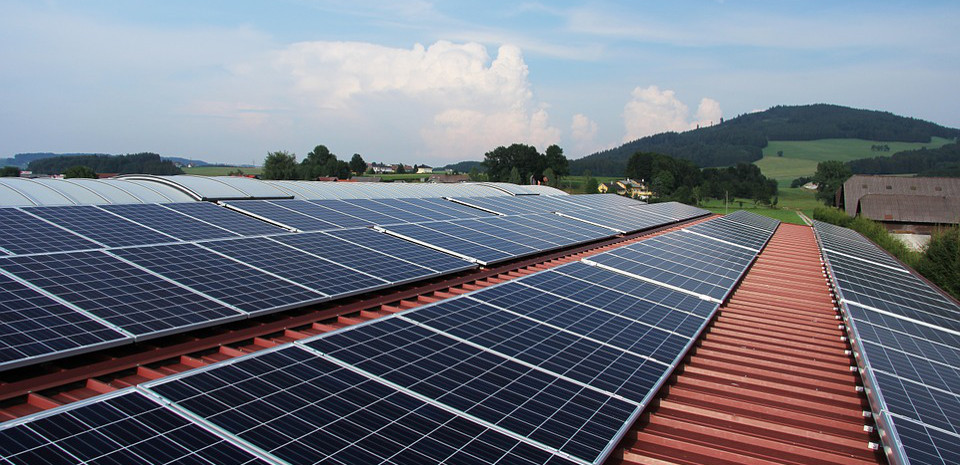It is already clear that changes to rates and net-metering policies are having a big impact on California’s residential solar market. However, one of the biggest changes under Net Metering 2.0 – the shift to time of use (TOU) rates for residential customers – is just beginning.
In a prelude to this fight, the solar industry is pushing back against the latest proposals by utility Pacific Gas & Electric Company (PG&E) to alter its rates for commercial and industrial (C&I) customers. Last week Solar Energy Industries Association (SEIA) filed testimony arguing against several features of PG&E’s proposed changes to C&I rates over the next three years.
Conflict over the peak
One of the main points of contention is the timing of peak demand. Due to high and increasing penetrations of solar on California’s grid, daytime peak has been eliminated and the ramp of additional electricity needed in the evening as the sun goes down gets progressively more severe (the “duck curve”).
And while SEIA acknowledges that changes are needed in PG&E’s peak TOU periods, it says that PG&E’s proposal to move the peak from 5 PM to 10 PM is not supported by commission findings, and that instead peak should be set at 3 PM to 8 PM. This is close to the proposal by the state’s consumer protection agency, which calls for a 3 PM to 9 PM peak.
SEIA’s notes that PG&E’s request does not fit with its other rates. “In this case, PG&E is proposing the illogical result to establish a summer peak period for its C&I customers that starts one to two hours later than its residential TOU periods, even though C&I customers tend to peak earlier in the day than residential customers,” states testimony by R. Thomas Beach on behalf of SEIA.
And while a difference of an hour or two may seem academic, this is actually a big issue for compensating solar customers. “The change in peak TOU periods that will result from this case will have significant adverse impacts on customers who have made major investments in solar facilities in reliance on the current set of TOU periods for PG&E,” argues Beach.
Given the affect it can have on investments, SEIA is also arguing for 10-year grandfathering of current TOU rates.
Demand charges
SEIA also takes issue with PG&E’s proposals for demand charges. Such charges are typical for C&I customers, but SEIA says a reduced role is warranted, citing a PG&E study showing that costs are allocated similarly between different rates with monthly fixed charges and volumetric TOU rates, whether or not such rates also had demand charges.
In his testimony, Beach noted that maximum or annual demand charges limit customers’ ability to use distributed-energy resources to reduce or shift their peak period usage.
“Instead, the Commission should place greater reliance on targeted, time-dependent TOU volumetric rates (such as CPP rates) and on short-horizon, time-dependent demand charges, such as daily demand charges covering just peak-period demand,” states Beach.
Residential solar and storage
Under a push from from state regulators, PG&E has also issued proposals for rates to support on-site energy storage for residential and small commercial customers. However, like much that PG&E does, the current form of these proposals does not look particularly helpful.
SEIA notes that PG&E’s storage- rate proposals have the same issues that its C&I rate proposals, particularly regarding demand charges. As an alternative to PG&E’s proposed non-coincident, “any time” demand charges, SEIA has proposed cost-based TOU rates for residential and small commercial customers, with and without demand charges.
Ultimately, both PG&E and SEIA are gearing up for a larger fight over residential TOU, which was hinted at in SEIA’s testimony. “SEIA intends to propose similar TOU periods for residential customers at an appropriate opportunity in the future.”
The results of that battle may have even bigger impacts for California’s solar industry.
This content is protected by copyright and may not be reused. If you want to cooperate with us and would like to reuse some of our content, please contact: editors@pv-magazine.com.









By submitting this form you agree to pv magazine using your data for the purposes of publishing your comment.
Your personal data will only be disclosed or otherwise transmitted to third parties for the purposes of spam filtering or if this is necessary for technical maintenance of the website. Any other transfer to third parties will not take place unless this is justified on the basis of applicable data protection regulations or if pv magazine is legally obliged to do so.
You may revoke this consent at any time with effect for the future, in which case your personal data will be deleted immediately. Otherwise, your data will be deleted if pv magazine has processed your request or the purpose of data storage is fulfilled.
Further information on data privacy can be found in our Data Protection Policy.